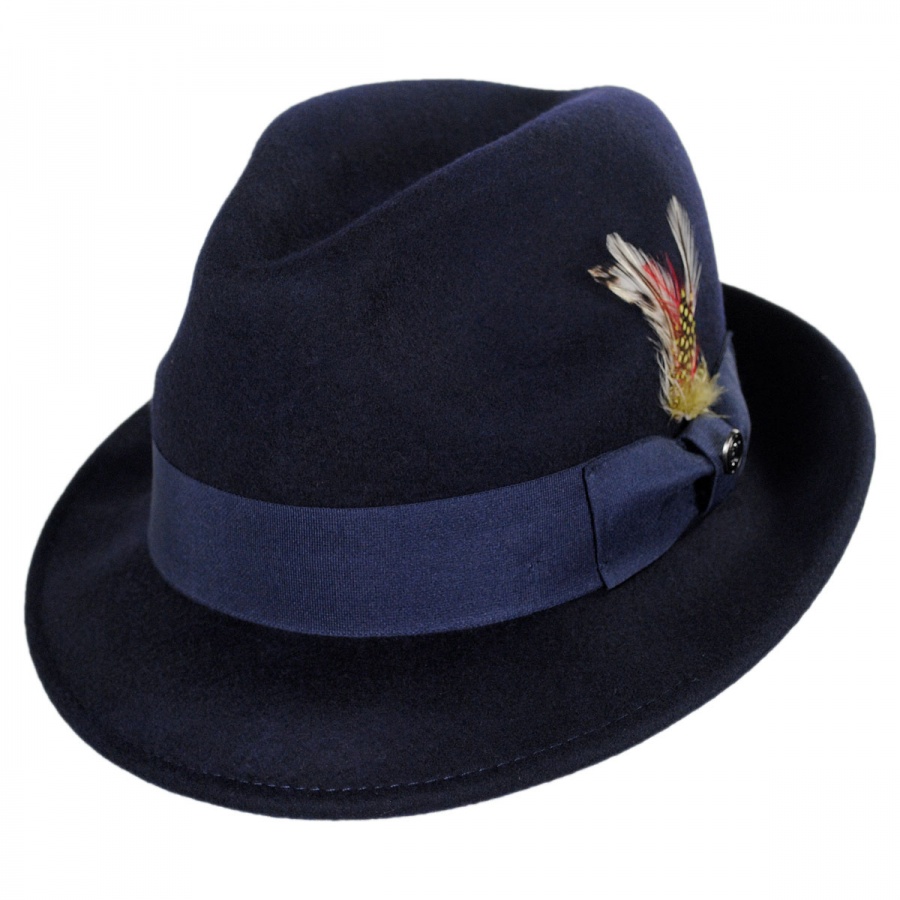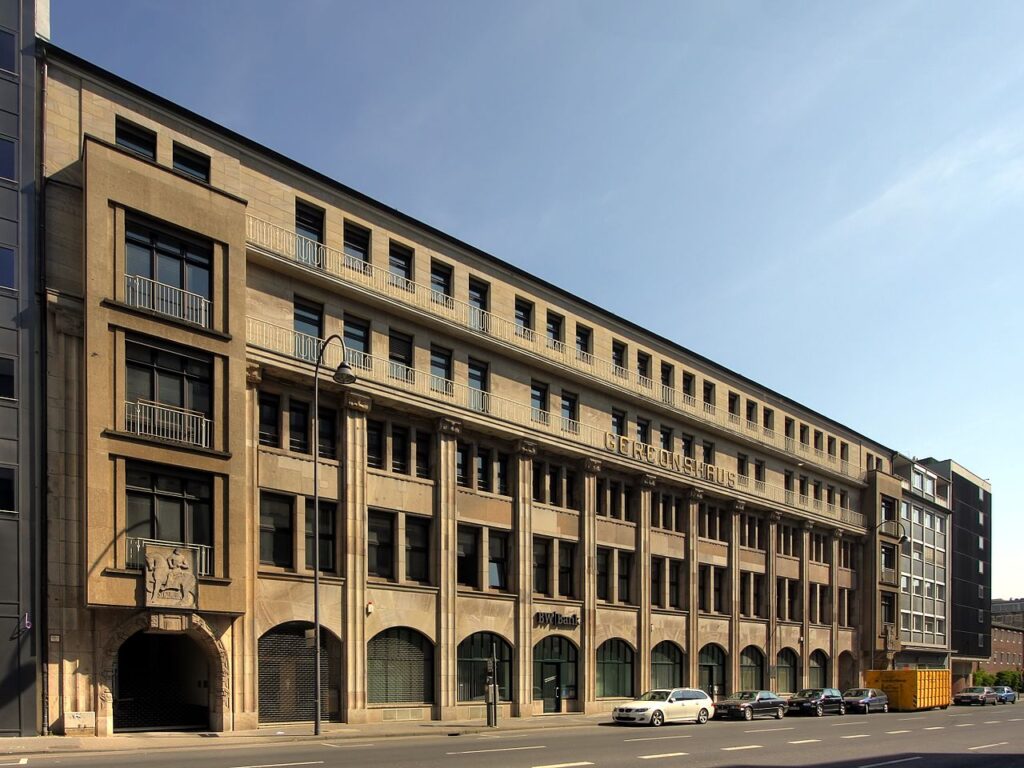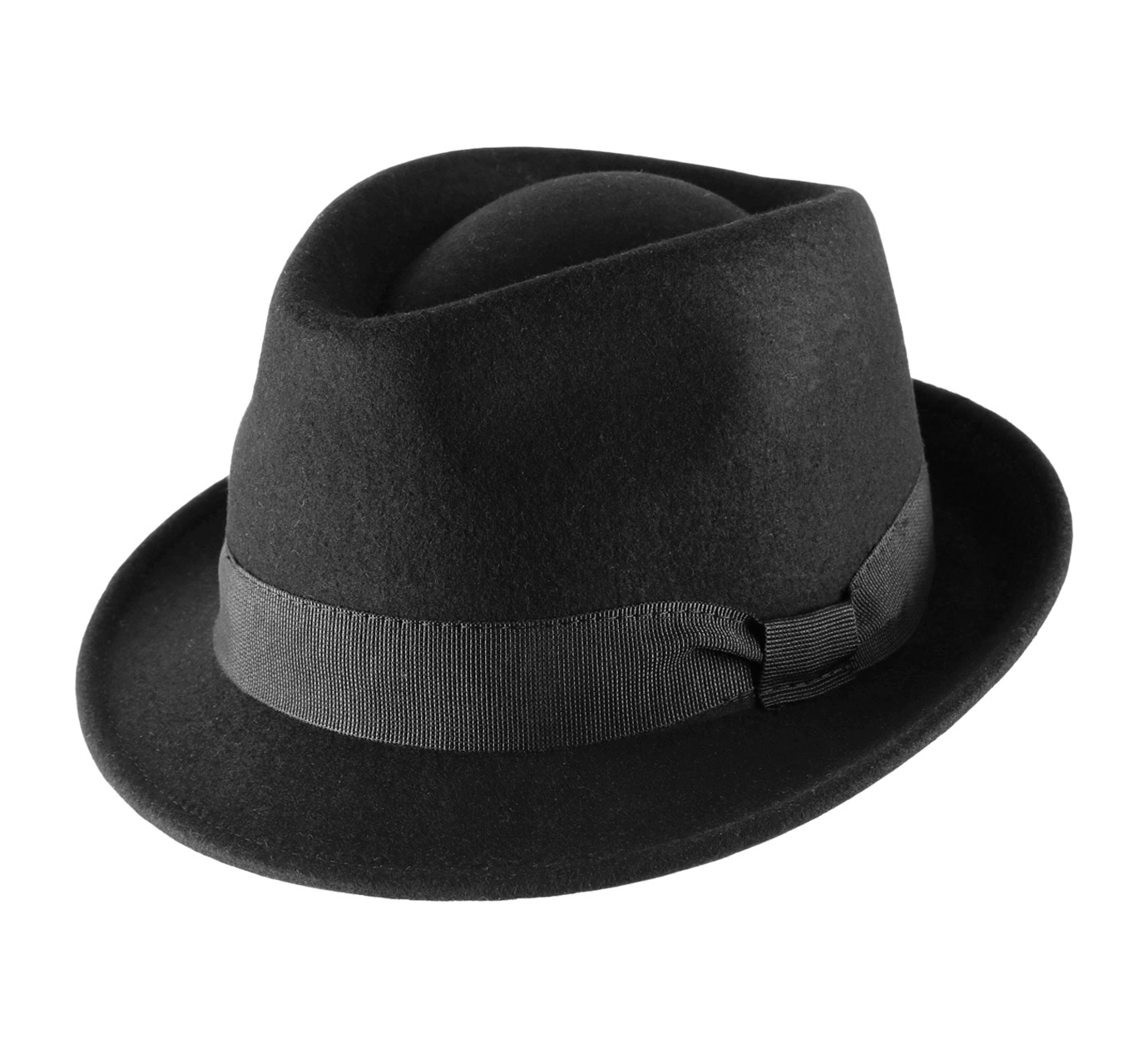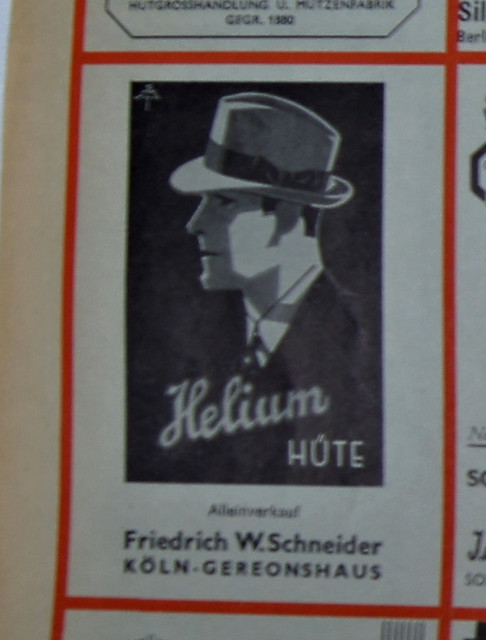I’m not much of a hat person. I find a ball cap or a toque will do me for the year. And ball caps seem to be the most popular hat style, at least here in Canada. We don’t see a lot of people wearing fedoras… although the prairies may see a fair number of cowboy hats! I don’t think my father wore hats either, mind you, he wasn’t a big fan of any hat… other than a ball cap! Heck, my mother had more hats than my father!
So when I first read the dossier on Josef Jakobs and learned that he was found with a blue trilby hat, I envisioned something like a bowler hat. How wrong I was! I’ve since done a bit of research and know that a trilby hat is something akin to a fedora, albeit with a narrower brim. And when I think of a fedora, I think of the hat that Indiana Jones made famous. Although… put a trilby and a fedora in front of me and I might be hard-pressed to tell them apart. Because truthfully, they do seem to blend together a bit.

So in the interests of accuracy and increasing my hat-knowledge… I did a bit of digging to try and see if I would be able to pass a hat-identification test in the future. You never know when that might come in handy. Let’s get started and see if I can succinctly summarize what I’ve discovered.
Fedora
The Fedora first came to light upon the stage during a play called “Fédora”, written by the French playwright Victorien Sardou in 1882. In 1889, the play was performed in the USA with a French actress, Sarah Bernhardt, playing the starring role as Princess Fédora Romanoff. Sarah wore a stylish, centre-creased, soft brimmed hat during the show and a star (or rather two) were born. Yes… we are talking about THE Sarah Bernhardt, infamous at the time for adopting men’s fashion and acting roles and having a plethora of male and female lovers.
The author of the play’s first review christened Bernhardt’s hat a “fedora” and the name stuck. The hat quickly became popular with women’s rights activists as a symbol for liberation and assertiveness. The fedora’s popularity soon spread to fashionable men such as Oscar Wild and Prince Edward VIII. Later, celebrities such as Humphrey Bogart, Al Capone, Cary Grant and Frank Sinatra would make the fedora one of their signature pieces. And, of course, much alter, Indiana Jones!
The fedora is traditionally made from wool or fur felt, but today, you can find fedoras made from straw, tweed, hemp, leather, and wool-synthetic blends. It generally has a pinched front and a shallow indented crown, although styles are changing. The primary distinguishing feature between a fedora and a trilby is the brim size. In a true fedora, the brim is more than two inches wide. The wider brims tend to be popular with women today (3 inches or more). The brim can also be snapped up or down in the front, back, or all around. A very versatile hat it would seem!
The fedora is generally worn forward on the head, so that the brim shades the eyes. It is seen as a fairly smart hat and can be worn at both semi-formal and formal events.
Trilby
The Trilby hat also has its origins in theatre. It made its first appearance during a stage adaption of George du Maurier’s novel “Trilby”. When the play premiered in London, the lead actress, who played the character Trilby in the play, wore a short-brimmed hat on stage and the style quickly took off.
The trilby was traditionally made from rabbit fur felt but today you can find trilby’s made from cotton, wool, leather, tweed, felt and straw. Similar to the fedora, the trilby has a pinched front and an indented crown (more of a tear-drop shape). The crown tends to be taller and pointier than the fedora. The main difference, however, lies in the dimensions. Trilby brims are much narrower (less than 1.5 inches) and are sometimes called the “stingy brim hat”. The brim can be curled up at the edges. The traditional trilby shape is often curled up at the back and curved down in the front.
The trilby is often worn further back on the head today, with a more perched look, like a halo hat. It is considered a more casual or semi-casual hat. Because of its narrow brim, the trilby can look too small on many people, although slim and tall Frank Sinatra managed to make it look stylish. The trilby is considered to be primarily a fashion accessory today with zero functionality (even flat caps have more of a brim for shading the eyes).
Josef Jakobs & the Blue Trilby Hat
With one exception, all of the reports on Josef’s clothing note that he was wearing a blue Trilby hat. The exception is a 17 February 1941 report by Captain J. Rivett-Carnac, Chief Constable of the Huntingdonshire Constabulary. He noted that Josef was wearing “a pork pie hat with maker’s name” A pork pie hat has a narrow brim like the Trilby but has a round telescopic crown (creased in a circle, not down the middle). The brim is also curled up all along its edge. Given that Rivett-Carnac never saw Josef’s possessions, but was relying on other reports, I am tempted to take his description with a grain of salt.

Acting Inspector Jaikens of the Ramsey Police wrote a report on Josef in which he stated Josef was wearing a ” blue trilby hat ‘Helium’ make”. An initial report by T.A. Robertson of MI5 also referred to it as a “trilby hat (Helium)”. Given that both Jaikens and Robertson met Josef and saw his hat, let’s run with their description.
I had searched for a hat-maker named Helium in Germany several years ago, but came up empty. A few weeks ago, however, I struck gold in a German-Austrian hat forum. One of the admins, who goes by “habigman”, posted some gorgeous photographs of a Helium hat from the 1950s. Habigman also managed to track down the manufacturer of the hat, a company named Friedrich W. Schneider Köln. The same photos were posted on the Fedora Lounge forum by “mayserwegener” with a location in Maryland, USA.
This particular hat is black in colour with a crown open of 5 1/2 inches and a of brim 2 1/4 inches. This is technically a bit too wide of a brim to be called a Trilby hat, but the Helium style may have changed over the years, given that this hat is likely from the 1950s.
The Friedrich W. Schneider company was started in 1913 by… you guessed it – Mr. Friedrich W. Schneider. In the 1920s, his son, Heinz Schneider started working for the company and by 1930 had taken over the enterprise from his father. The company had offices in Gereonshaus in Cologne (Köln).

Beyond that… I haven’t been able to find out anything else about the Helium brand. Presumably it was one line of hats that the company produced at least as early as the 1930s and 1940s, when Josef purchased it.
What we do know is that the trilby or snap brim hat was a stylish, all-purpose hat for through the inter-war and Second World War years. Josef was nothing if not stylish and a snappy dresser!
References
American Hat Makers site – Difference between Trilby and Fedora – https://americanhatmakers.com/blogs/news/trilby-vs-fedora
Tenth Street Hats – Difference between Trilby and Fedora – https://blog.tenthstreethats.com/posts/fedora-vs-trilby
Huayi Hats site – Difference between Trilby and Fedora – https://www.huayihats.com/blog/trilby-vs-fedora.html
Hicks and Brown – Difference bewteen Trilby and Fedora – https://www.hicksandbrown.com/blogs/news/trilby-hat-vs-fedora-whats-the-difference
Greeley Hat Works – History of the Fedora – https://greeleyhatworks.com/the-history-of-fedoras-a-hat-timeline/
German-Austrian Hat Forum on Invision – https://germanaustrianhats.invisionzone.com/topic/320-friedrich-w-schneider-k%C3%B6ln/
Fedora Lounge Forum – https://www.thefedoralounge.com/threads/german-austrian-hutmachers.32103/page-338
Friedrich W. Schneider Köln hat company website- https://fwshats.de/historie/?lang=en
Hat History website – http://www.hathistory.org/dress/felt.html






